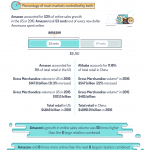Why A PayPal Executive Is Being Mentored By His Millennial Employees

The higher you climb in your career, the less you understand the next generation of employees, which is why reverse mentoring is important.
Good leaders connect with employees, but the longer you’re at a company, the harder it can be to relate to a new generation of hires. Sri Shivananda, vice president of global platform and infrastructure at PayPal and former vice president of global platform and infrastructure at eBay, has resolved the issue through reverse mentoring—learning from his junior employees.
“I believe to be a good leader, you need need good followership. Followership comes from respect. Respect comes from credibility. And credibility from relevance,” Shivananda says.
Early in his career, Shivananda learned from senior employees. Once he became a leader, he gave back by mentoring team members. As he moved up through organizations and teams, he realized that his training and education were not going to be sufficient.
“I had adopted my learning from those who walked the path before me, but when it comes to learning about what’s trending, the folks I needed for help were a completely different set of people,” he says. “These are the younger members of the organization. They have the keys to trends and information I wasn’t being exposed to.”
Reverse mentoring isn’t new, and Shivananda says he stumbled onto the idea a few years ago. John Donahoe, former eBay CEO, was a fan of the technique, and liked to stay current by shadowing young entrepreneurs. One of those was Airbnb’s Brian Chesky, who was reported to have motivated Donahoe to rethink eBay’s customer experience.
How It Works
Unlike traditional mentoring, reverse mentoring can be very informal. In fact, junior employees often don’t realize they are mentoring their leader, says Shivananda.
“Ask simple questions about the exciting things they’re working on and the technologies they leverage,” he says. “Discovery comes from the power of using questions. It’s not about quantifying; it’s about learning and creating a listening environment through inquiry. Once they are comfortable, they will brag on what they’re working on. In the process of the brag, they share.”
Reverse mentoring can happen by simply being present. In the book Lincoln on Leadership: Executive Strategies in Tough Times by Donald Phillips, Shivananda learned a concept called MBWA, or Management By Walking Around.
“I dedicate time to walking the floor,” says Shivananda. “I’m not trying to achieve something tangible. Sometimes we end up on a whiteboard geeking-out topic. It’s about connecting with individuals, and brainstorming to bring out what they know.”
Another method for creating a reverse-mentoring session is to identify conversations you wish to have, and deliberately run into the appropriate people. Shivananda reads tech blogs and says he has a fair amount of knowledge on new topics.
“I know enough to throw out keywords and phrases,” he says. “If I know someone is working on [the open-source software] Docker, for example, I’ll run into them and ask questions such as, ‘What’s exciting about this new technology?’ ‘How is it changing what we do?’”
The Benefits
Reverse mentoring can have a lot of rewards, including offering a shortcut to discovery, says Shivananda. “We all consume data and process information to derive insights,” he says. “They have done the data and information-processing steps, and I can learn their insights without having to go through the process myself. Since I am not doing the coding, this is sufficient for me.”
Shivananda says reverse mentoring also helps leaders connect with millennials. “Often leaders look at millennials and don’t understand them,” he says. “Reverse mentoring gives me an opportunity to do that, not just by learning in terms of technology, but by engaging and maximizing the workforce. It gives me an ability to demonstrate that this is a place to come to work and be appreciated. Somebody wants to understand and learn from them.”
Reverse mentoring works best when it’s a reciprocal experience, says Shivananda, and this can help the junior employee grow in his or her own career by discussing their aspirations.
“Reverse mentoring should always be a mutual experience; I provide value by sharing my years of experience,” says Shivananda. “They give me value through sharing what’s new, what’s happening, and what’s relevant.”
Finally, reverse mentoring can lengthen your career. “I am in my position for the craft, and I’m not going to retire anytime soon,” says Shivananda. “You have to realize that you need to stay relevant. If you’re not relevant, people might follow you in the short term because of your organization and respect, but over generations, that dissipates. For leaders to continue to lead, they need to connect humanly though topics of mutual interest. Reverse mentoring is a way to do that.”
(101)














